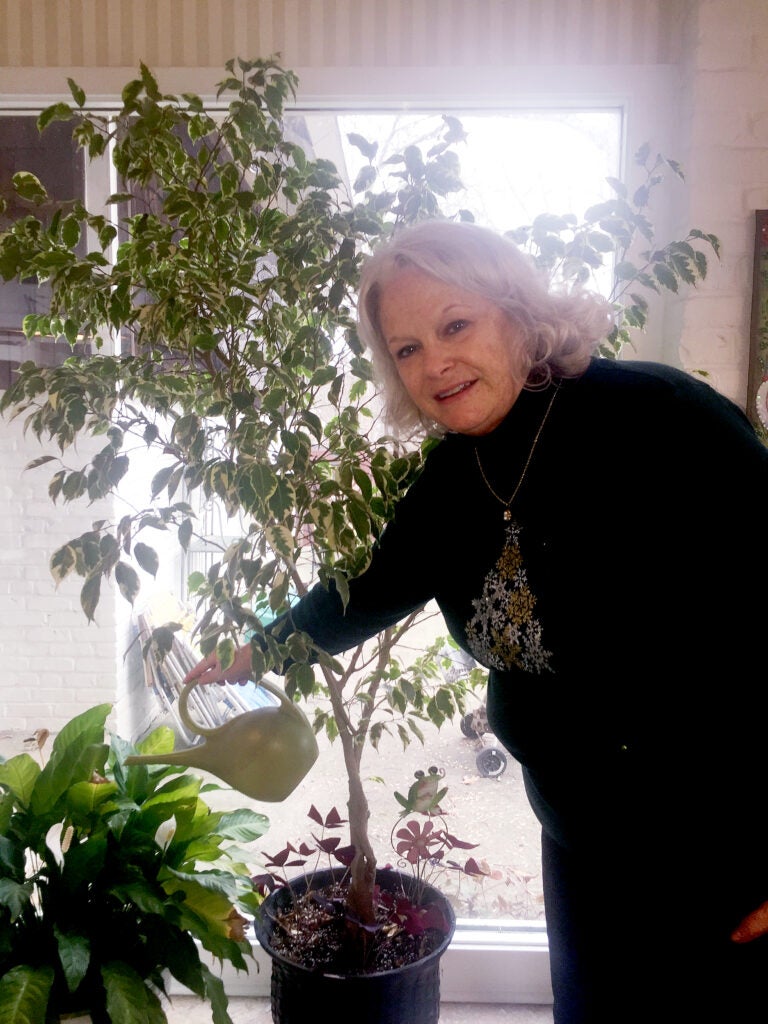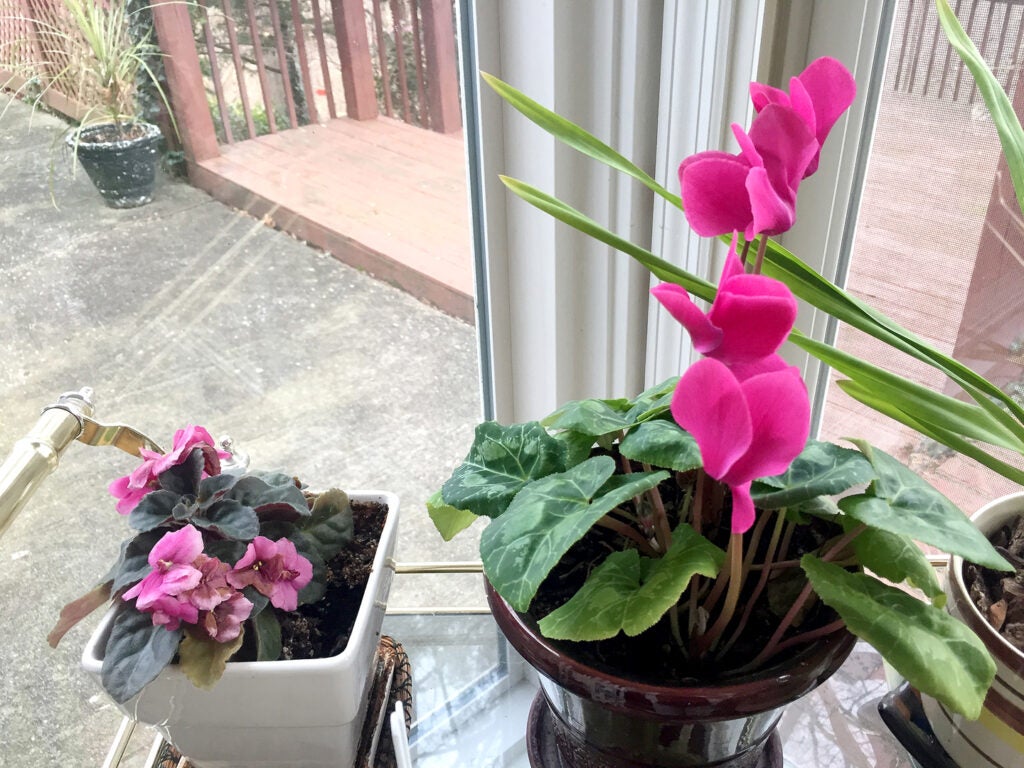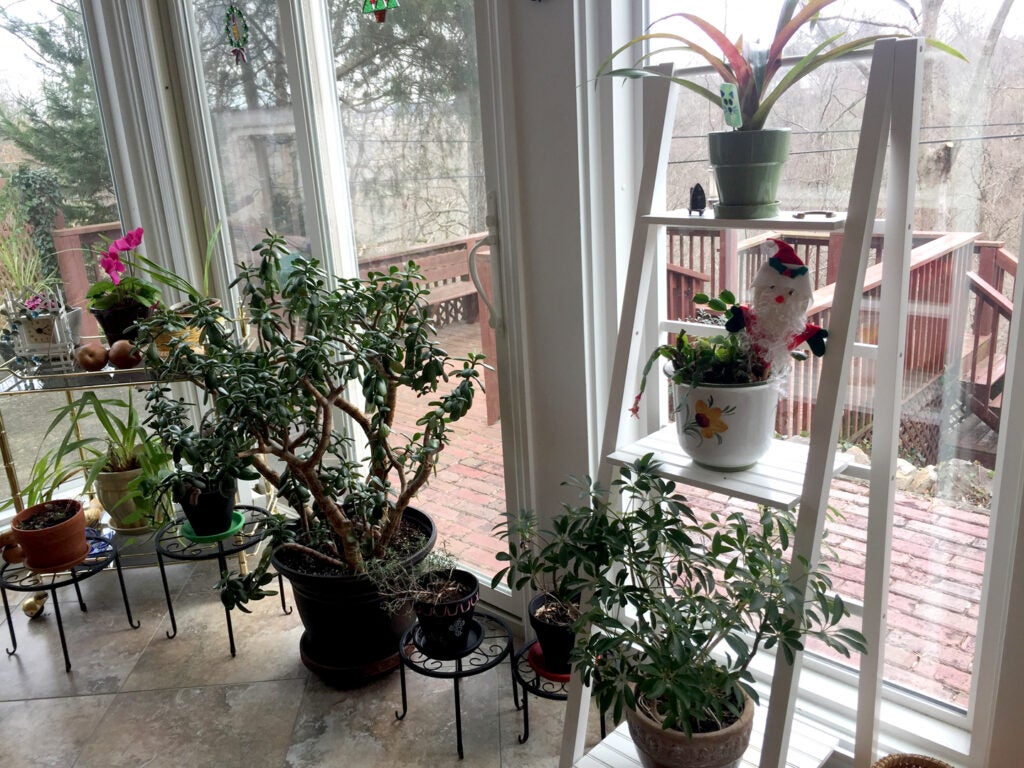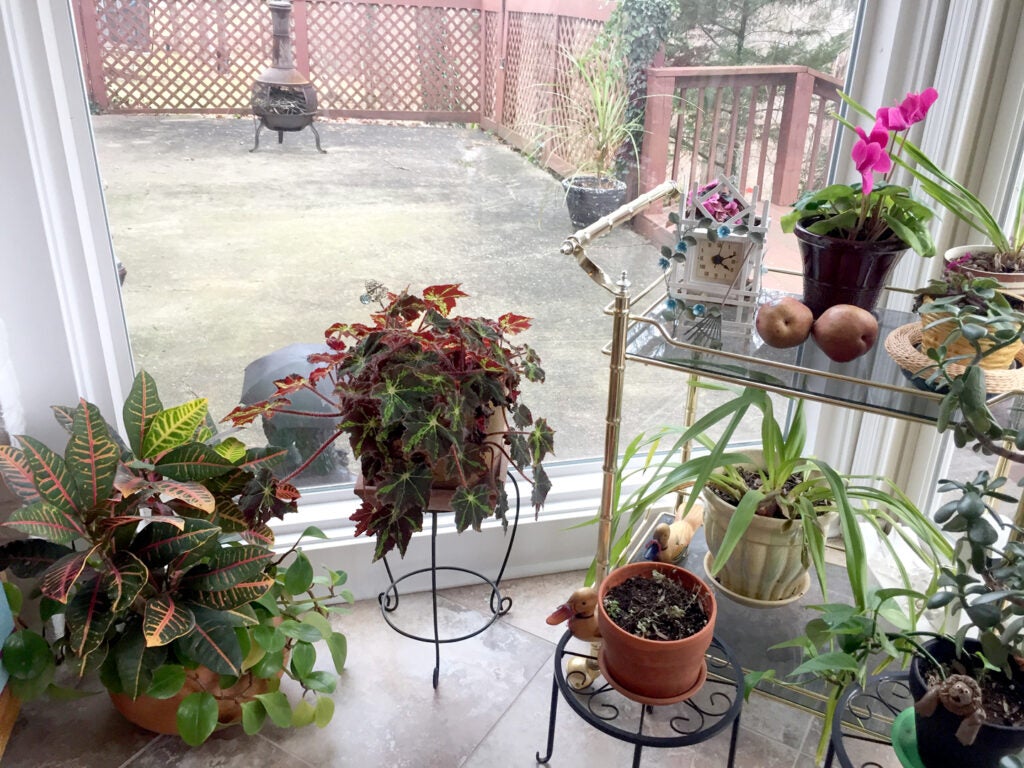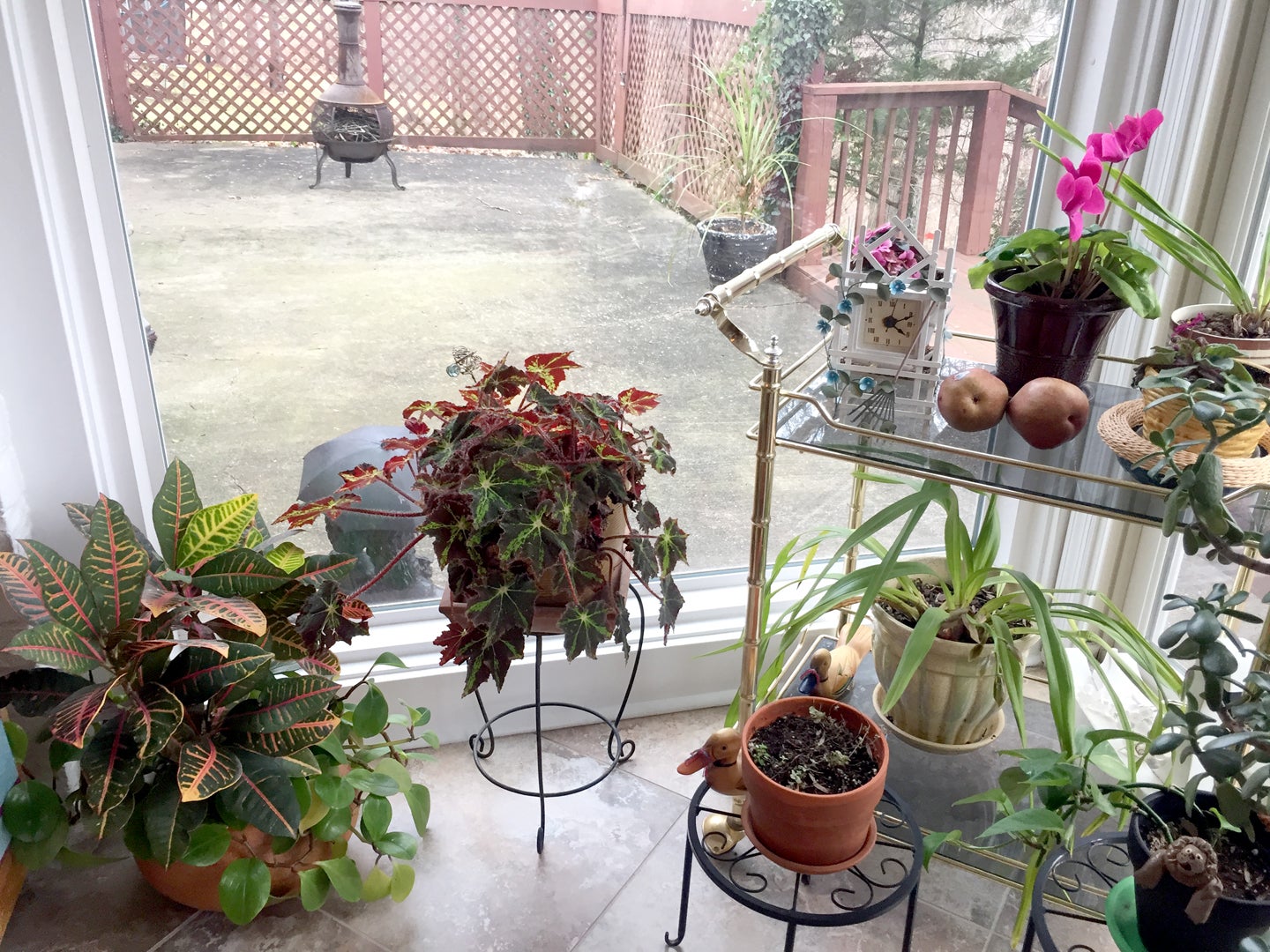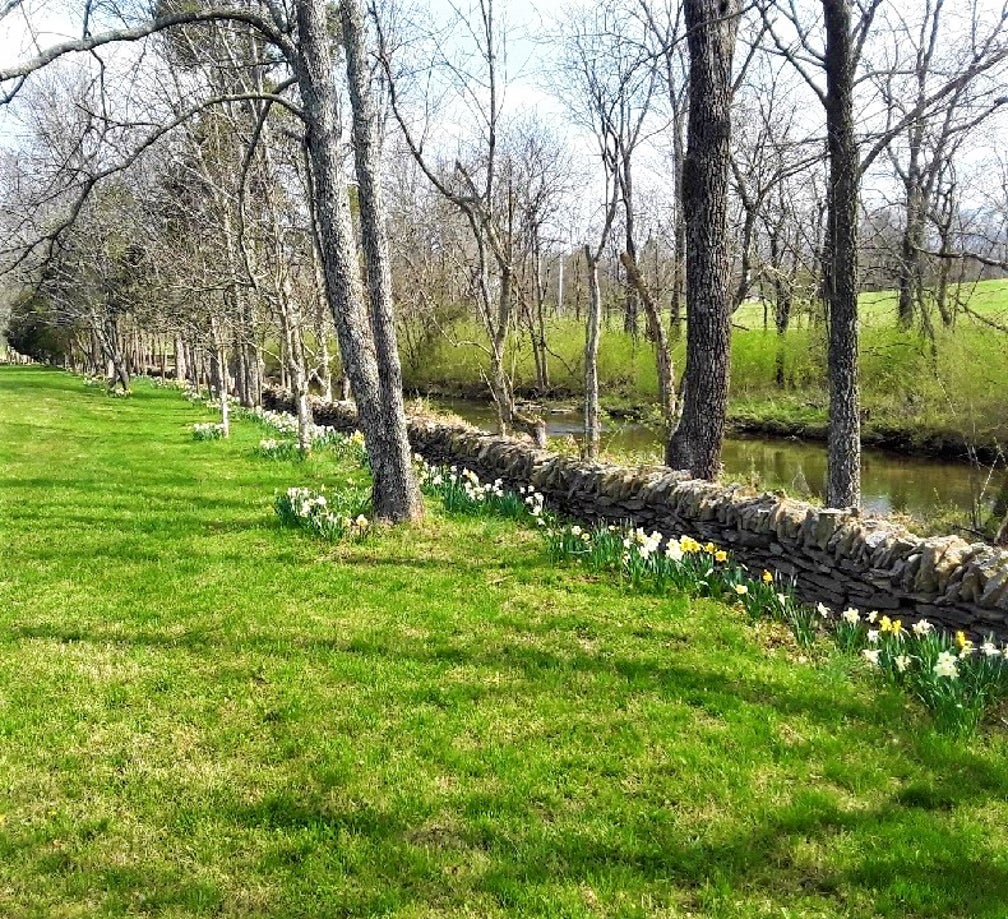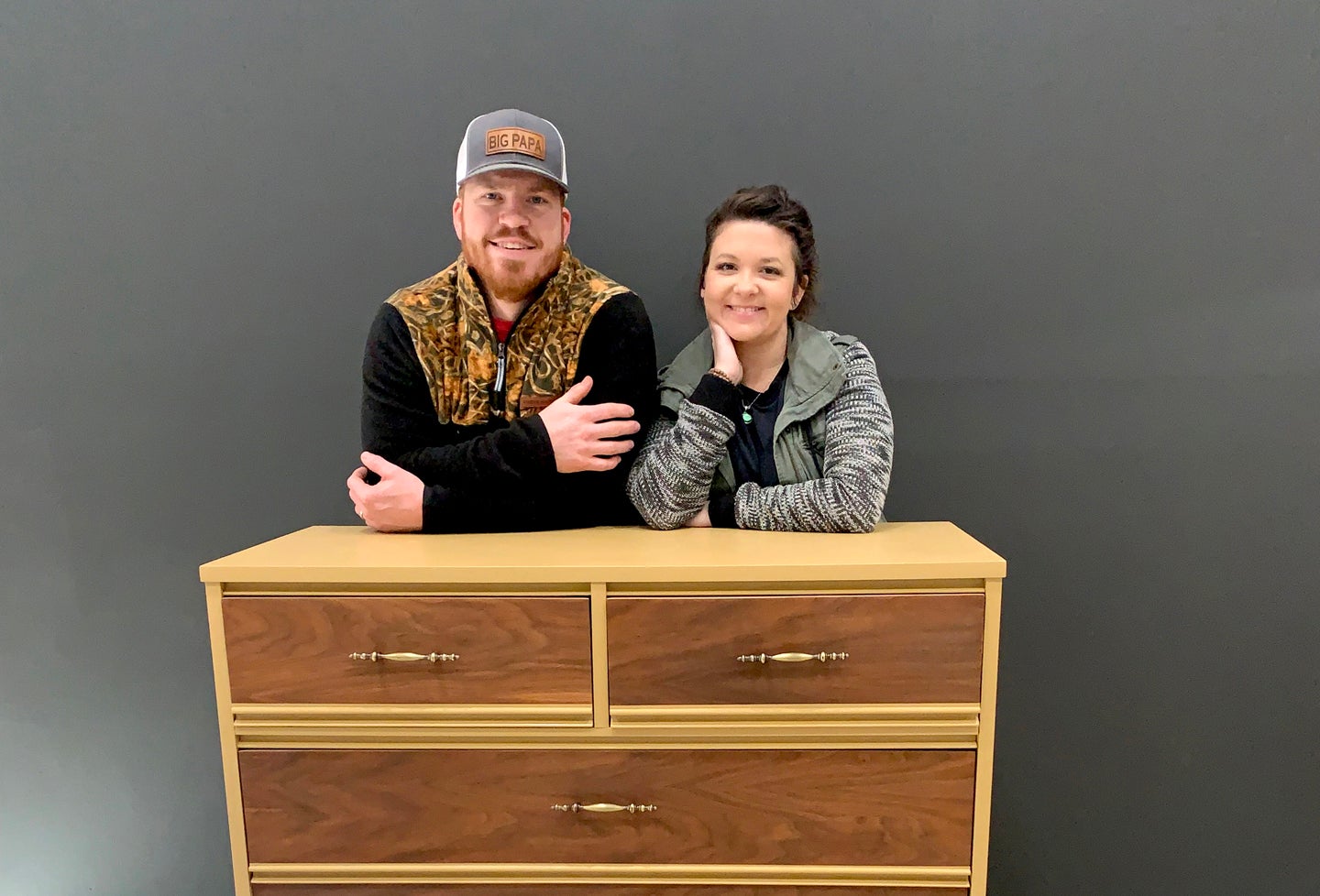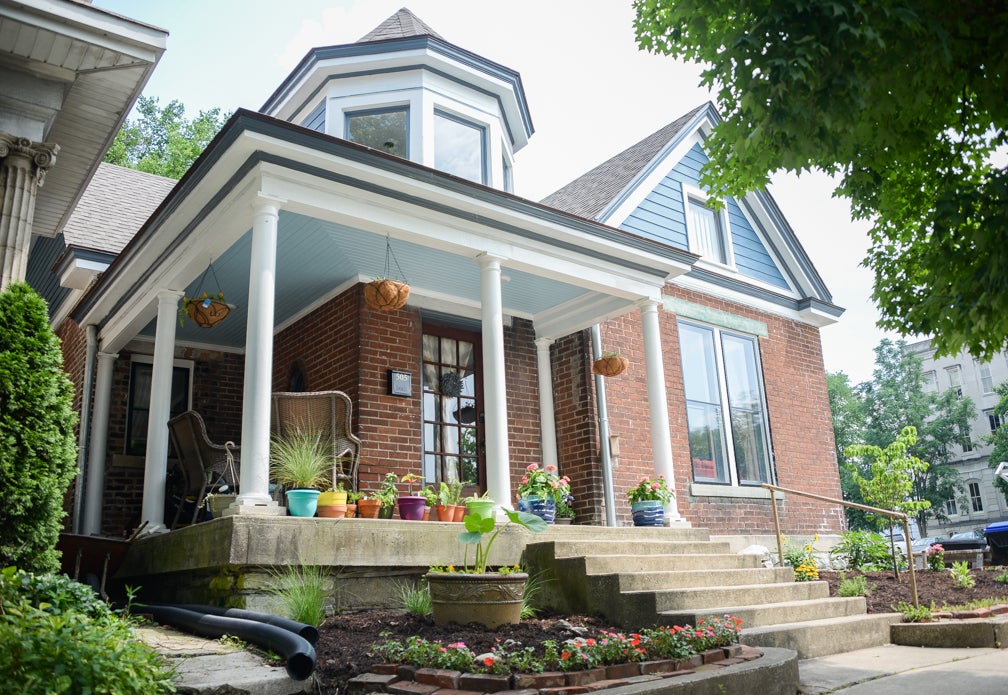By Barbara H. Smith, The Garden Club of Frankfort
When Linda and Bryan Stopper move their potted outdoor plants inside for the winter, the plants don’t notice much difference in the scenery. That is because the back of their house on Tanglewood Drive features a wall of glass across the first floor.
The plants are transferred from the deck outside the windows to the other side of the windows in the breakfast room. Not many gardeners are so fortunate to have such a wide expanse of sunny windows to shelter their plants.
However, Bryan notes that it is a lot easier to care for the plants when they are outside. “I can just hit them with a hose, or God will water them,” he said. “Raccoons are a problem, though. They especially like to eat the herbs, and they are so aggressive they will knock the pots over to get to them.”
“We have to leave the Christmas Cactus plant inside all year,” Linda explained, “because the squirrels will devour it. It is lovely to have the view of the woods, except for the visits from the animals who like to eat our plants.”
The Stoppers’ leafy residents are inside with them for several months each year. They bring their plants in before the first frost appears, and move them back outside after the last frost, as is suggested by gardening books.
Gardening resources offer the following tips for successful overwintering:
• Carefully select the plants you want to keep. Plants that are healthy, expensive or keepsakes will be priority.
• Discard diseased plants.
• Clean the windows where plants will be placed. West or south-facing windows are best. If the light is not sufficient, consider adding grow lights or other artificial lighting. Refer to gardening books on lighting for indoor plants for details.
• To aid plants’ adjustments, move them to shadier areas outside for a few days before bringing them inside.
• Move plants inside when frost threatens or before temperature dips below 45 degrees.
• Rinse leaves thoroughly by spraying with water. Check plants for bugs. If any are present, treat them with an insecticidal soap or another insecticide specifically for these pests.
• As plants adjust to being moved indoors, their leaves may drop, according to Robin Sweetser, writer for the “Old Farmers Almanac Garden Guide.” Don’t be too concerned, they will recover.
• If you have plants that require high humidity, you can group them together and mist them. But this only lasts for a short period.
• A better long-term solution is the use of a pebble tray under your plants. Line the trays with waterproof material, add a layer of gravel, and place the pots on top. Keep the gravel moist.
• Indoor plants do not need much water, and over-watering is the most common cause of death for plants. Wait until the top ½ inch of soil in a pot is dry to touch before watering.
• In the spring, the plants will send up new growth. When the danger of frost is gone, move the plants outside and resume watering.
“In moving these plants back and forth, I have learned that they do better outside with drainage holes in the bottom of the pots,” said Bryan, “and when inside they thrive better without drainage holes.”
Looking around the room, Linda said, “I find it pleasant to have all the plants indoors for the months they are here. They bring a sense of peace to the room, and they also improve the air we are breathing.”
